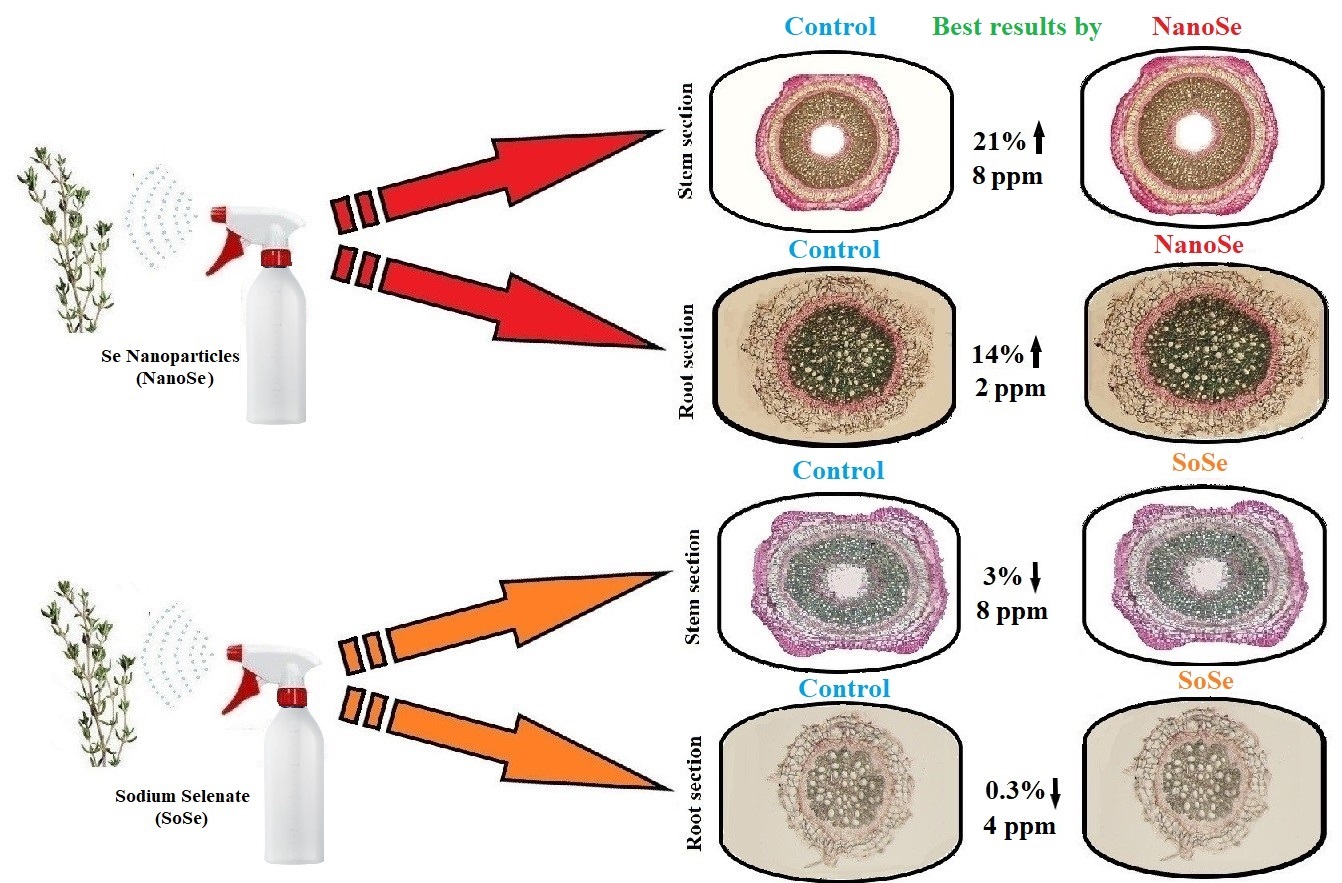Effects of foliar application of two forms of selenium on anatomic features of Thymus daenensis Celak

Published 2024-10-23
Keywords
- Medicinal plant,
- nanoparticle,
- Thymus daenensis
How to Cite
Copyright (c) 2024 Hossein Mirzaie-Nodoushan

This work is licensed under a Creative Commons Attribution 4.0 International License.
Abstract
To investigate selenium effects on anatomic features of Thymus daenensis, three concentrations of bulk and nanoparticles of the element (2, 4 and 8 ppm) along with distilled water, as a control, were sprayed on foliar of young seedlings of the plant species for six times with 2 weeks intervals. Transverse sections of stems, roots and leaves of the treated plants were manually produced and stained by Carmine and Methylene blue. Average of 5 readings was recorded for each treatment on several anatomic traits. Statistical analysis of the data revealed that the effects of selenium treatments were significantly different, at 1% of probability, on all of the studied anatomic characters. The first level of nanoparticles showed the most positive effects on several root characteristics. The highest level of selenium nanoparticles (8 ppm) showed the most positive effects on stem diameter and stem vascular cylinder diameter. The last two levels of nanoparticles had similar and the largest effect on stem epidermis thickness. The lowest level of bulk selenium (2 ppm) showed the most increment on leaf characteristics. Application of a low concentration of selenium by foliar spraying on young plants of the species is suggested for more vegetative growth and higher photosynthetic efficiency





